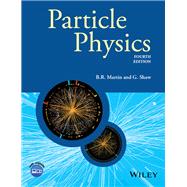An accessible and carefully structured introduction to Particle Physics, including important coverage of the Higgs Boson and recent progress in neutrino physics.
- Fourth edition of this successful title in the Manchester Physics series
- Includes information on recent key discoveries including: An account of the discovery of exotic hadrons, byond the simple quark model; Expanded treatments of neutrino physics and CP violation in B-decays; An updated account of ‘physics beyond the standard model’, including the interaction of particle physics with cosmology
- Additional problems in all chapters, with solutions to selected problems available on the book’s website
- Advanced material appears in optional starred sections








